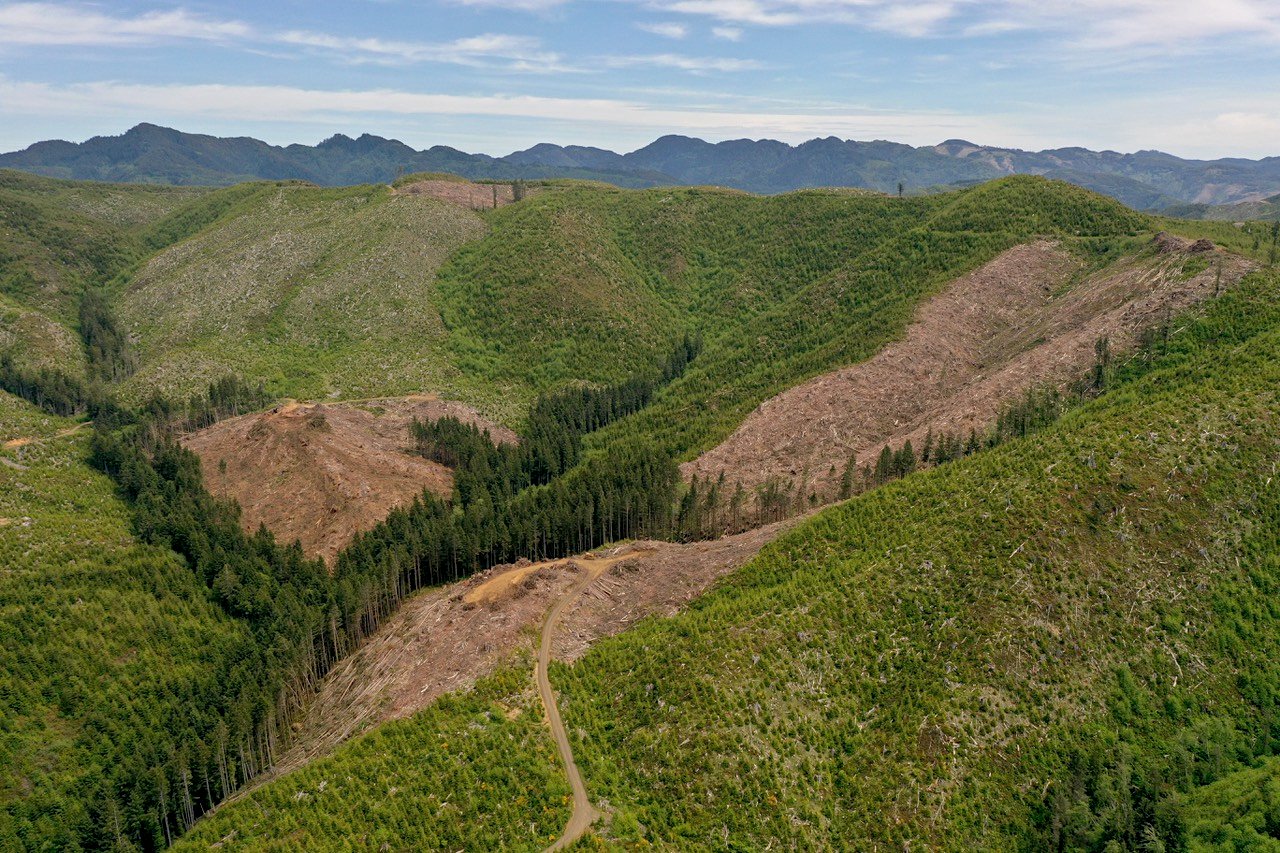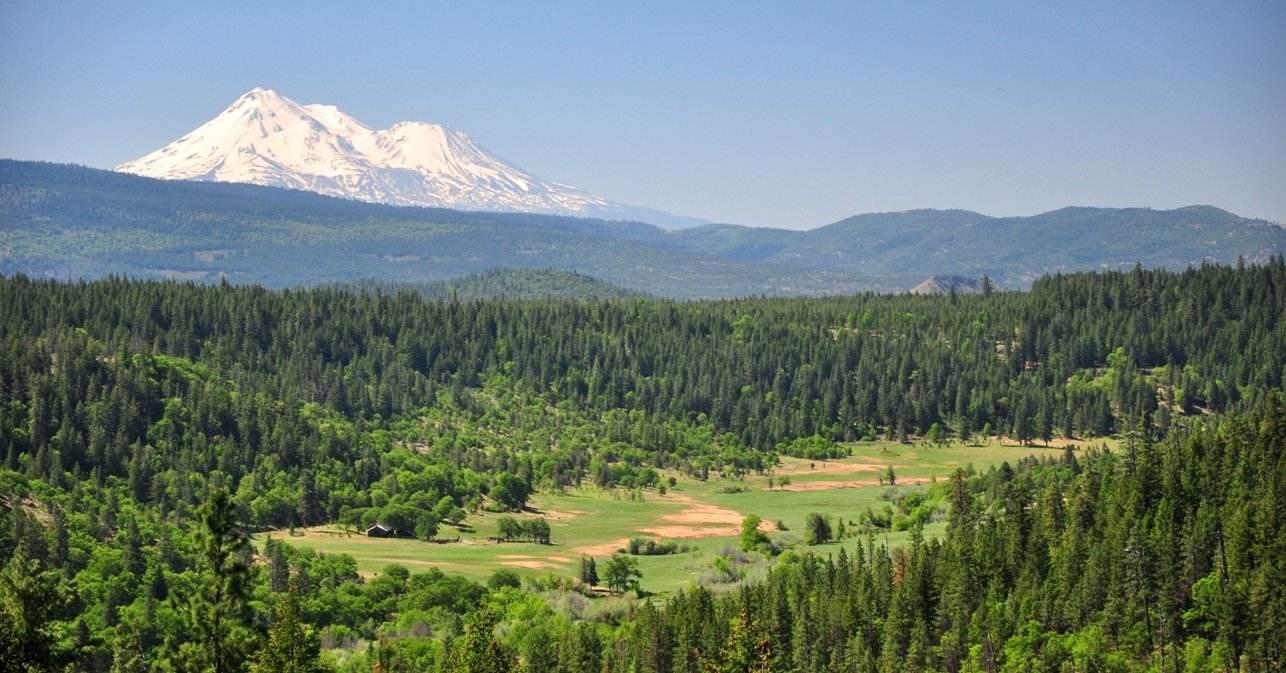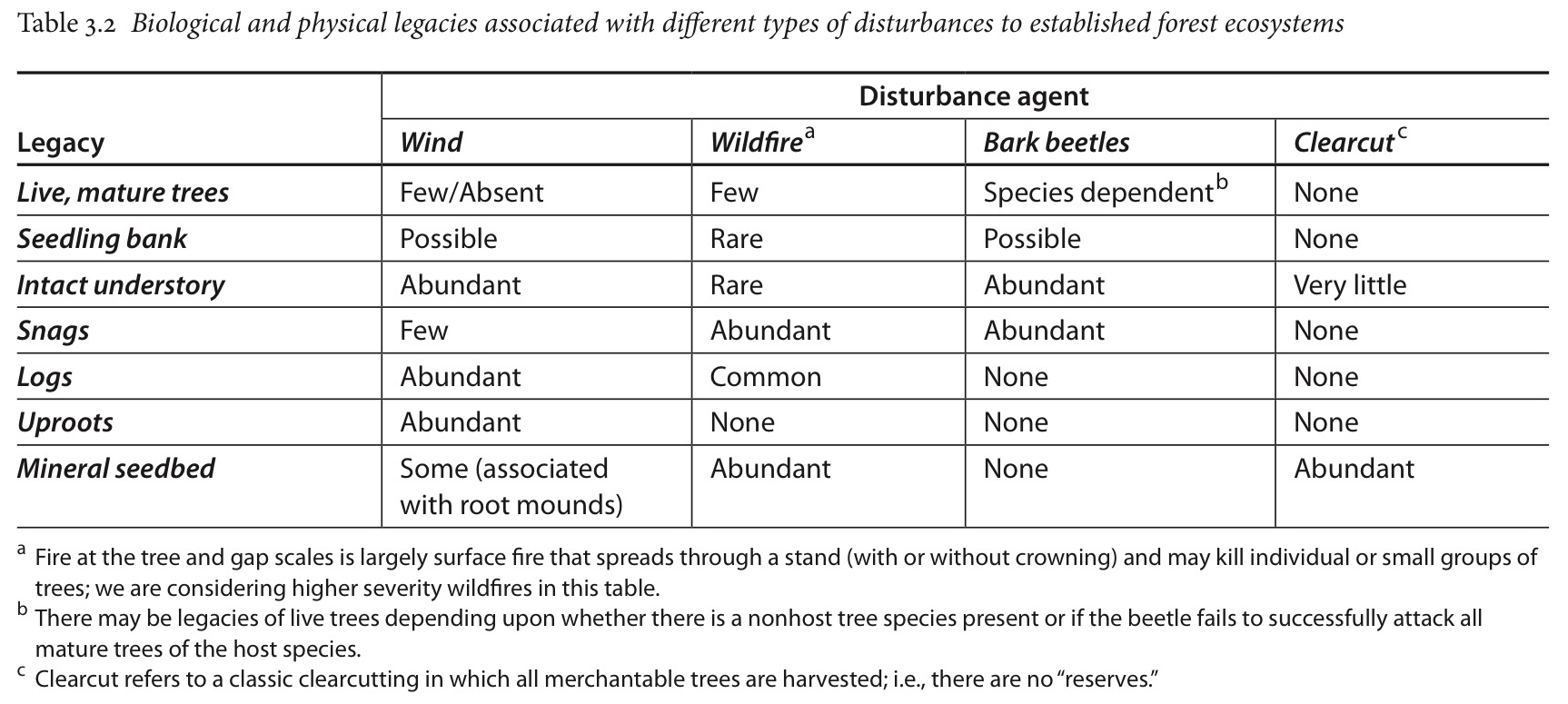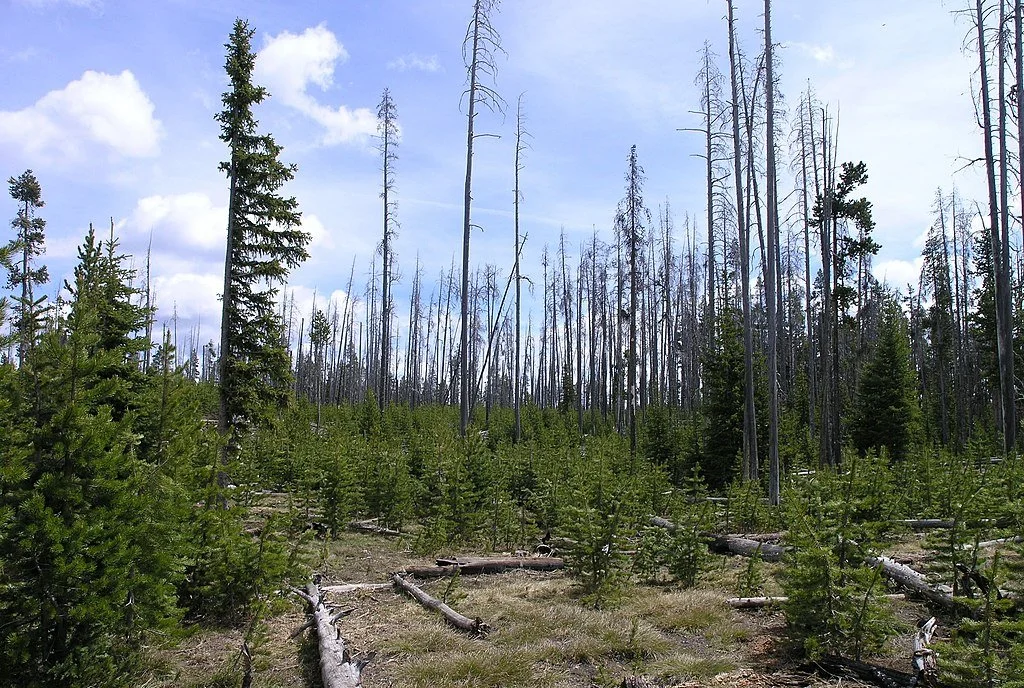If net present value of timber production is your goal, you want the preforest stage to be as short as inhumanely possible. Whether the trees were killed by clear-cutting or nature, by all means send as much of the forest to the mill as possible. Then densely plant a monoculture of Douglas-fir (or ponderosa pine, depending upon where you are) seedlings and spray the plantation with herbicides and/or hand-slash so any broadleaf vegetation doesn’t compete with the new conifer seedlings. Since time is money and forty years is the most profitable rotation age for production forestry, you cannot be wasting any of those years on the preforest stage.
The traditional response of the Forest Service, the Bureau of Land Management, and private industry after a stand-replacing event has been to immediately salvage log it (akin to mugging a burn victim) and then densely plant it with a monoculture of one species, usually Douglas-fir. The intent has been to short-circuit this stage of natural forest succession and reestablish the young forest stage. Of course, ecologically the plantation is more akin to a cornfield than a forest, but it has been “reforested,” by gawd.
Fortunately, the times are a-changin’ as understanding of preforests improves.
Complex Versus Simplistic Early Successional Forest Ecosystems
Not all preforests are created equal.
If the disturbance was natural—wildfire, wind, insect, avalanche, or volcano—the preforest stage is rich in the legacy of trees (living or dead, standing or fallen) that continue to influence the structure and function of the ecosystem. This is a complex preforest.
If salvage logging followed a natural disturbance or if the stand was clear-cut—perhaps accompanied by one or more doses of prejudicial herbicides and then a precommercial thinning to remove the excess conifers that were established due to the herbicides—it is a simplistic preforest.
The Douglas-fir region abounds in simplistic preforest but is rather short on complex preforest. Simplistic preforest on private timberlands has some—but not a lot—of habitat value. Certain species and ecological processes just won’t be found in simplistic preforest. However, as there is a lot of simplistic preforest, there is significant total value on a whole-landscape basis.























